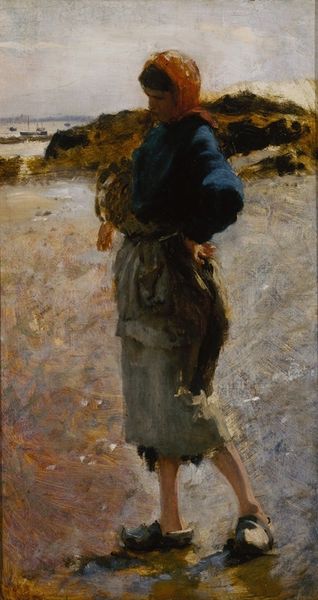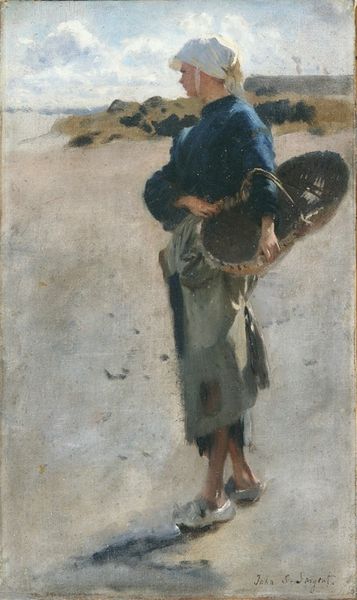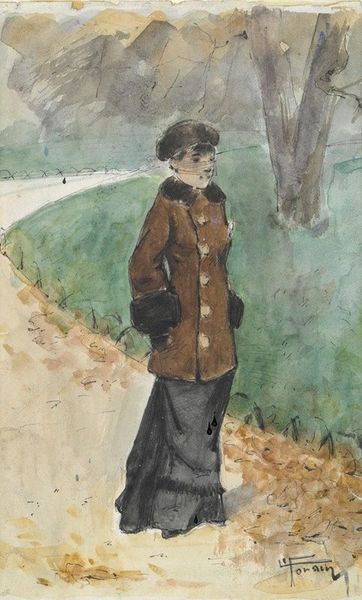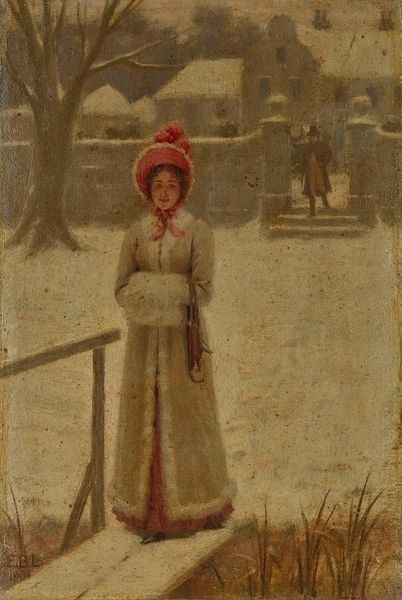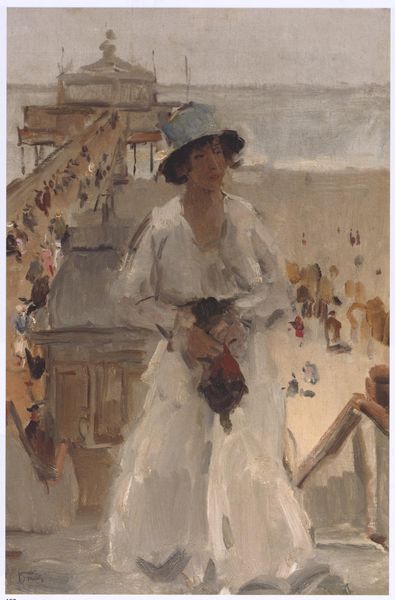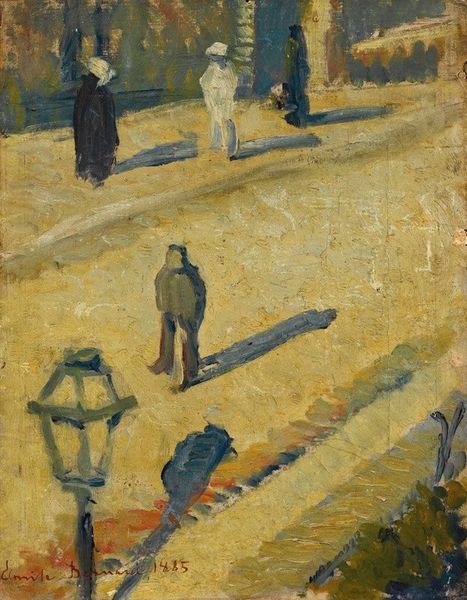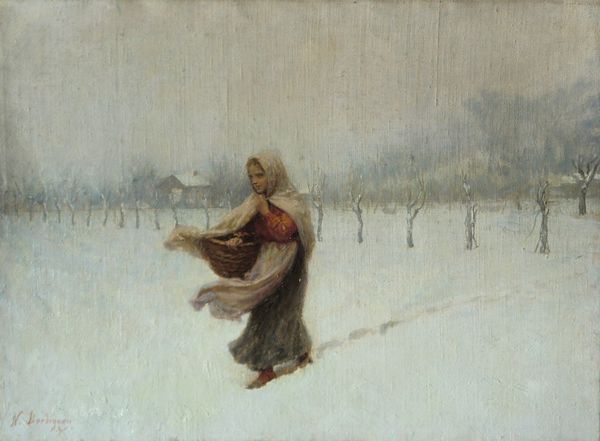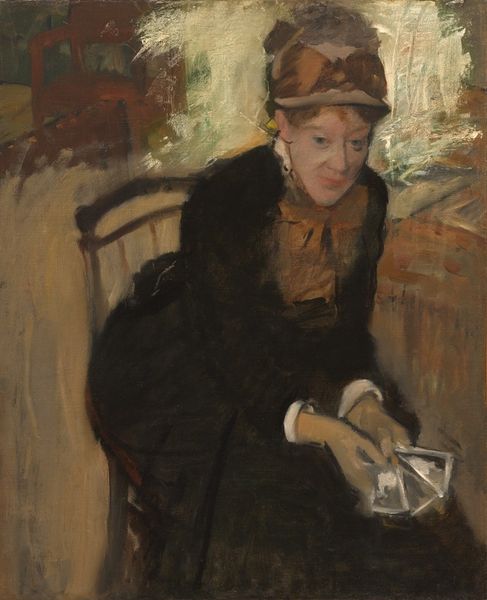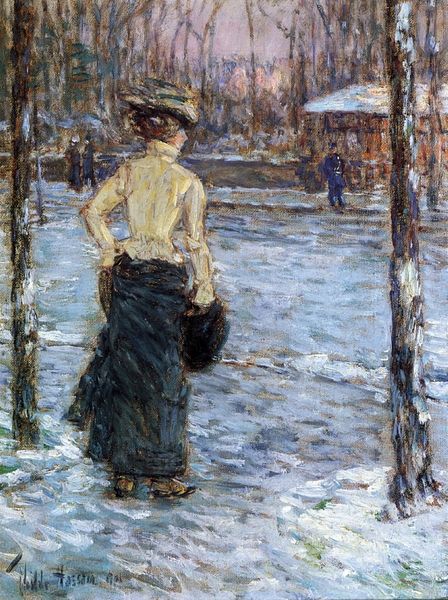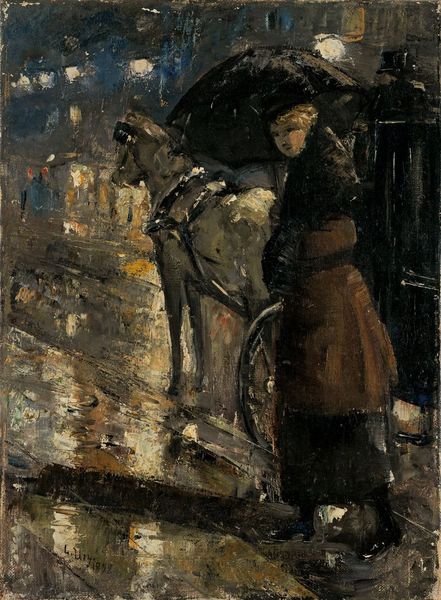
Copyright: Public domain
Editor: So this is "Winter in the Hague Forest" painted by Isaac Israels around 1930, and created with oil paint, seemingly with an impasto technique. It strikes me as quite muted, a study in browns and whites with a hint of blue. What draws your eye to this particular piece? Curator: What intrigues me first is the interplay between representation and abstraction. Notice how the figure is rendered with broad, confident strokes, particularly in the coat and hat, while the background dissolves into a textured field of tonal variations. Does this contrast create a tension, perhaps between the individual and the environment? Editor: That's interesting, I hadn't thought about it that way. I was mostly thinking about the colors, but looking again, I see what you mean with the brushwork. Are there other aspects of its formal construction that stand out? Curator: Consider the composition; the figure is positioned slightly off-center, disrupting any sense of perfect symmetry. The verticality of the figure contrasts with the horizontal emphasis of the snow-covered ground. Where does this asymmetry lead your eye, and what feeling does it evoke? Is it unbalanced, perhaps, or quietly dynamic? Editor: It's true; that positioning gives the image movement, so it's dynamic, yes. The ground almost merges with the sky. Curator: Precisely. And observe how Israels employs a limited palette. The muted tones contribute to a unified atmosphere, almost a sensory experience of the cold, damp air. Notice also how light seems to be diffused, lacking sharp contrasts, which amplifies the impression of a hazy winter day. Do you perceive any areas where the application of paint suggests texture or depth? Editor: Looking closely, it's particularly evident in the woman's coat; you can almost feel the fabric. I see now how the brushstrokes, color, and composition all work together to create a singular effect. Curator: Exactly. Israels masterfully manipulates these formal elements to evoke a specific mood and sensation. He lets the brushstrokes do the work, minimizing any narrative. We focus on what is in front of us – how it is painted, not what is painted. Editor: I think I have a much better appreciation for the purely visual aspects now, seeing the technique and composition as active parts of the experience, rather than passively receiving information.
Comments
No comments
Be the first to comment and join the conversation on the ultimate creative platform.
